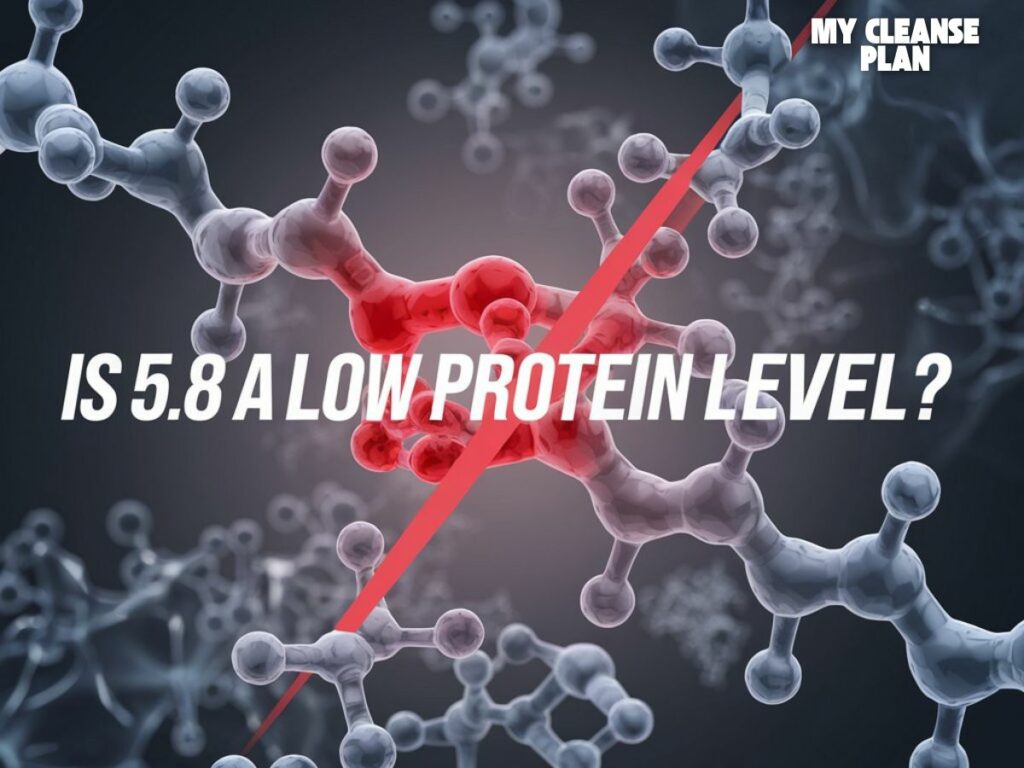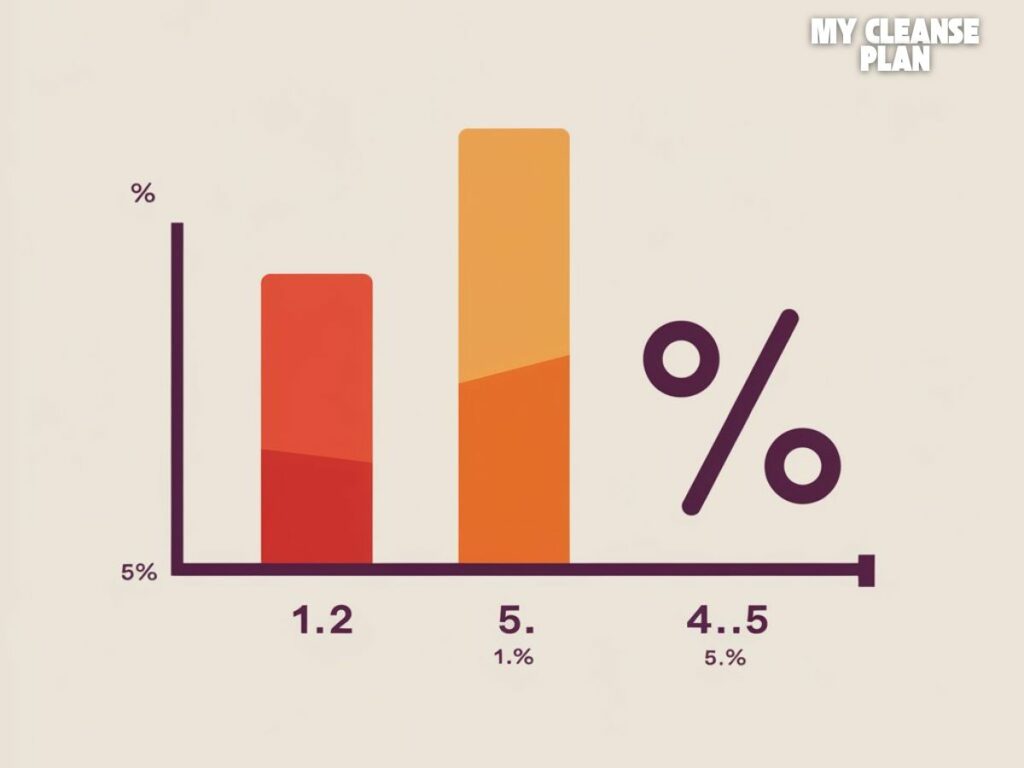Is 5.8 a Low Protein Level? Causes, Symptoms, and Treatment
Protein is an essential macronutrient that plays a crucial role in our overall health and well-being. It’s responsible for a variety of important functions, from building and repairing tissues to supporting the immune system and providing energy.
So, when it comes to protein levels, it’s natural to wonder – is 5.8 a low protein level? Let’s dive in and explore this question in detail.

Key Takeaways
Expert Guide
Understanding Protein Levels
Protein levels are typically measured in grams per deciliter (g/dL) or milligrams per deciliter (mg/dL).
The protein normal range can vary slightly based on age, gender, and other factors, but generally, it falls between 6.0 to 8.3 g/dL.
Now, let’s take a closer look at the significance of a protein level of 5.8 g/dL.

Is 5.8 a Low Protein Level? Understanding the Implications for Your Health
A protein level of 5.8 g/dL is considered slightly low, but not necessarily cause for immediate concern. Here’s a breakdown of what this level means:
Normal Range
Before we dive into whether 5.8 is a low protein level, let’s first establish what constitutes a normal range. Protein levels are typically measured in grams per liter (g/L) or grams per deciliter (g/dL).
A normal protein level varies depending on factors such as age, sex, and overall health, but generally falls within the following ranges:
- For adults: 6.0-8.3 g/dL (60-83 g/L)
- For children: 6.0-7.5 g/dL (60-75 g/L).

Significance of Low Protein Levels
Having a slightly low protein level, such as 5.8 g/dL, may not always indicate a serious underlying health issue. It could simply be a natural variation within the individual’s normal range. However, in some cases, low protein levels can be a sign of:
- Malnutrition or poor dietary intake of protein-rich foods
- Certain medical conditions, such as liver or kidney diseases, which can impair protein production or increase protein loss
- Chronic inflammation or infection, which can increase protein consumption
- Digestive disorders that impair nutrient absorption
Factors That Affect Protein Levels
Several factors can influence your protein levels, and it’s essential to understand these factors to put your 5.8 g/dL reading into context.
1. Diet and Nutrition
Your dietary intake of protein-rich foods, such as meat, poultry, fish, eggs, dairy, legumes, and nuts, is a primary determinant of your protein levels. If you’re not consuming enough of these foods, your protein levels may be lower.
2. Age and Gender
Protein levels can naturally fluctuate with age and gender. For example, older adults may have slightly lower protein levels due to age-related changes in muscle mass and metabolism. Additionally, women may have slightly lower protein levels than men due to differences in body composition.
3. Physical Activity
Regular physical activity and exercise can influence protein levels. Individuals who are physically active and have higher muscle mass may have higher protein levels compared to those who are less active.

4. Underlying Health Conditions
As mentioned earlier, certain medical conditions, such as liver or kidney disease, can impact protein levels. These conditions may affect the body’s ability to produce, metabolize, or properly utilize proteins.
What Are the Symptoms of Low Protein Levels?
If you’re experiencing low protein levels, you may notice a lack of protein symptoms, including:
- Fatigue and weakness
- Slow wound healing
- Edema (swelling) in the hands, feet, or abdomen
- Dry, flaky skin
- Thinning hair or hair loss
- Increased susceptibility to infections
- Cognitive impairment or mood changes
These symptoms can have a significant impact on your overall health and well-being, so it’s important to address what is the most common cause of low protein levels.
How Can You Increase Your Protein Level?
If your protein level is consistently low, there are several steps you can take to help increase it:
1. Focus on Protein-Rich Foods
Ensure that your diet includes a variety of high-quality, protein-rich foods, such as lean meats, poultry, fish, eggs, dairy, legumes, and nuts. Aim for a balanced diet that provides the recommended daily intake of protein, which is typically 46-56 grams per day for adults.
2. Consider Protein Supplements
If you’re struggling to meet your protein needs through diet alone, you may want to consider taking protein supplements, such as whey, casein, or plant-based protein powders. Be sure to consult with your healthcare provider before starting any supplement regimen.
3. Maintain a Healthy Lifestyle
Adopting a healthy lifestyle, including regular exercise, adequate sleep, and stress management, can also help support optimal protein levels. These factors can all contribute to overall body function and nutrient utilization.
When to Seek Medical Attention
If your protein level is consistently low (below 6.0 g/dL), it’s a good idea to consult with your healthcare provider.
They can perform additional tests, such as a comprehensive metabolic panel or albumin test, to determine the underlying cause and develop an appropriate treatment plan.
Explore Also:
Creativehouseblog
Dietsheriff
Gigasecurehome
It’s important to note that a single low protein reading may not necessarily require immediate medical intervention.
Your healthcare provider will consider your overall health, medical history, and any other symptoms or lab results to determine the significance of your specific protein level.
So, while 5.8 is slightly below the normal range, it’s essential to consider individual circumstances and consult with a healthcare professional to determine the best course of action.
By understanding the risks that is 5.8 a low protein levels and taking steps to boost your intake, you can ensure you’re providing your body with the necessary building blocks for optimal health.
FAQs Of Is 5.8 a Low Protein Level? Causes, Symptoms, and Treatment
What is the recommended daily protein intake?
The recommended intake typically ranges from 0.8-1.2 grams of protein per kilogram of body weight, depending on factors like age and activity level.
What are the potential causes of low protein levels?
Common causes include malnutrition, digestive disorders, liver or kidney disease, excessive protein loss, and dehydration.
Is 5.8 a low protein level?
Yes, a protein level of 5.8 g/dL is considered low compared to the normal range of 6.0-8.3 g/dL for adults.
When should someone seek medical attention for low protein levels?
Signs that warrant medical attention include unexplained weight loss, weakness, swelling, frequent infections, and changes in appetite or digestion.






